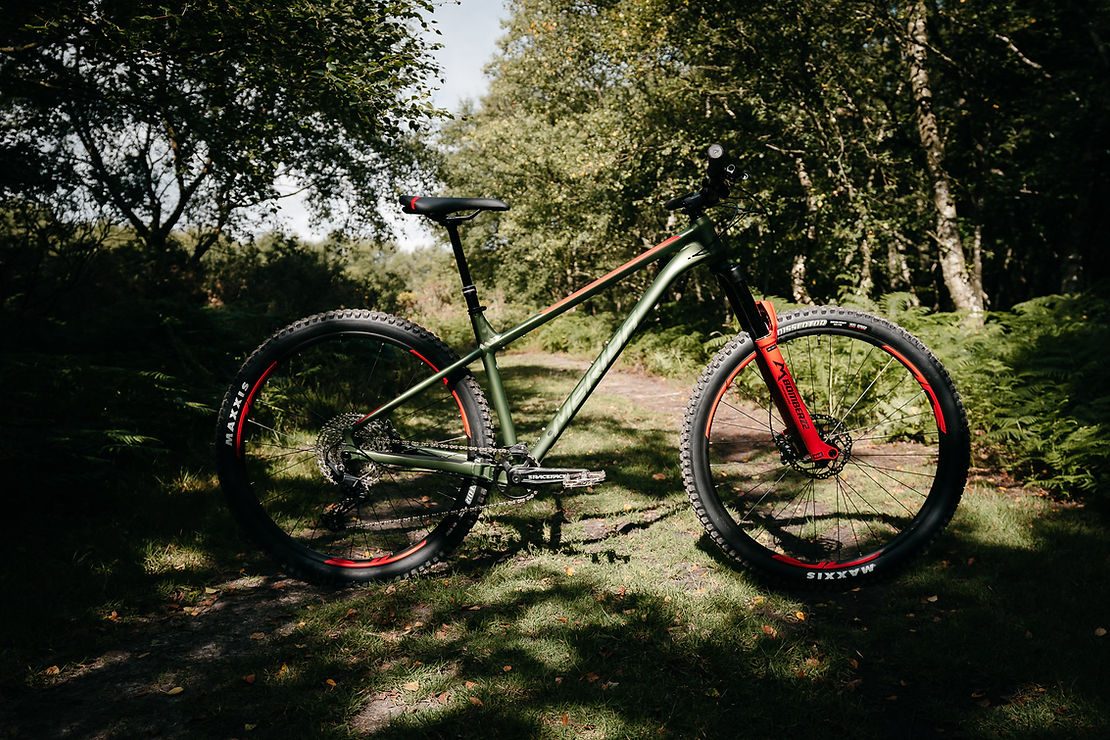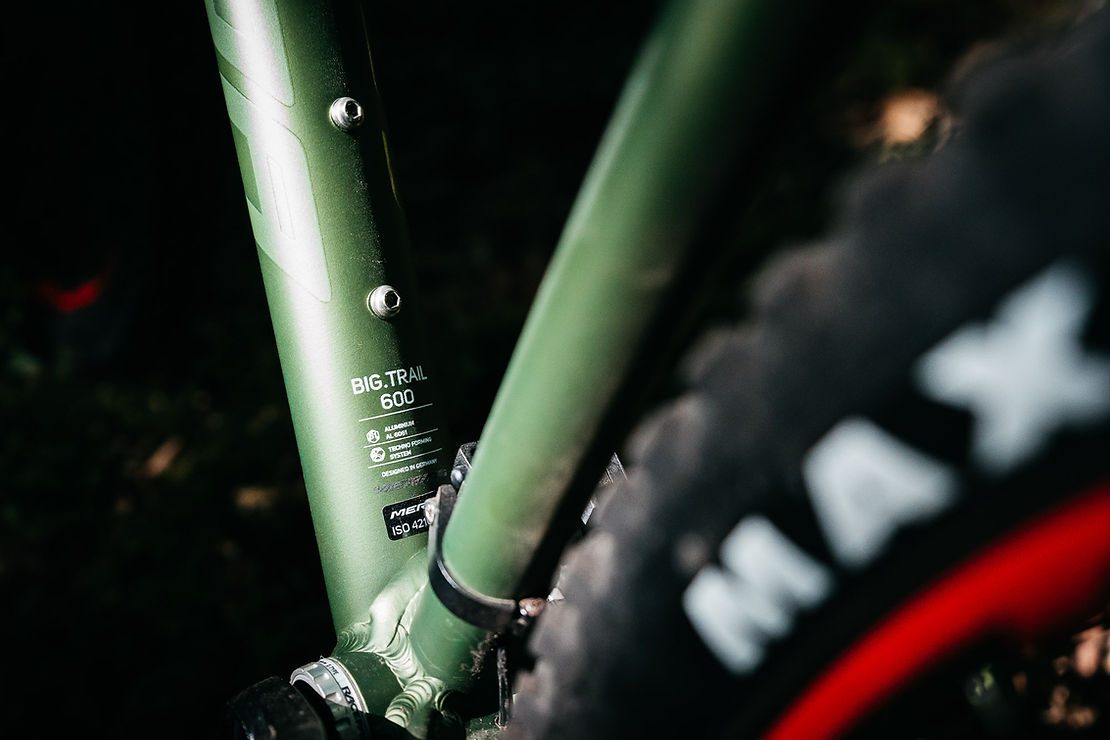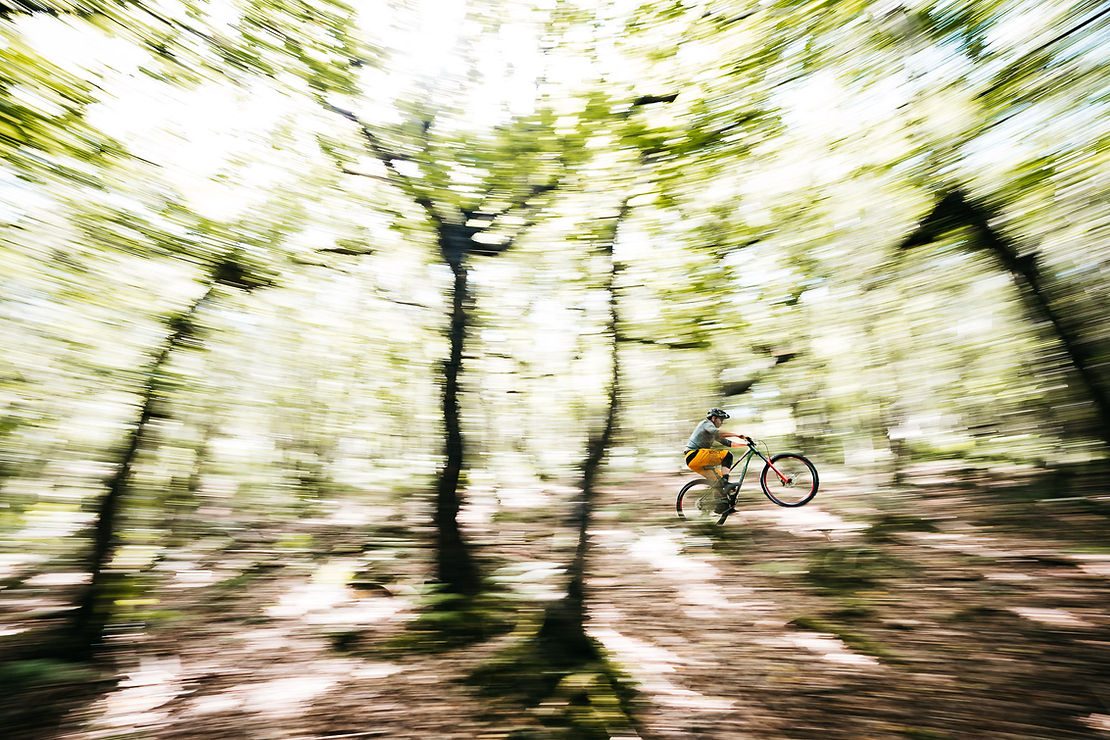Hardtails are on the comeback, with more and more coming to market with geometry suited to the demands of modern riding at affordable price points. Merida’s all-new Big Trail is designed to fill the gap between their XC-targeted hardtails and their range of full-suspension trails bikes. Read more below…

“It almost feels like yesterday that some of the leading UK bike retailers gathered their wishes and sat down with our R&D team, for a German ‘Weissbier’ or two, to combine their experience and knowledge of the market with the design and development prowess of our German engineers. This plan simply had to work! The UK has been one of the driving forces in Europe if not in the world when it comes to taking hardtails on demanding trails and tracks, so combining these two groups of specialists would be the ideal team to create the new BIG.TRAIL. Today we often associate increased ‘trail fun’ with more and more full suspension travel due to the fact that long-travel bikes are getting more capable on the way down but also on the way back up again. At the same time, the trail hardtail has also developed quietly in its shadow and the new BIG.TRAIL is our take on this fun-packed, versatile, capable and rewarding ride category. After being absent from this segment, we are back with a bang, that combines a modern trail bike geometry with a long-travel fork and chunky 29er wheels for perfect trail performance and amazing corner grip.

The BIG.TRAIL is a hardtail which is designed for trail riding. Geometry, suspension travel and features of this model are optimised for hitting the trails. But why would you use a hardtail when everybody is saying a full-suspension is the better choice? There are a few reasons: it’s more affordable, easier to set up and it needs less maintenance than a full-suspension bike. So if the budget is small, it’s probably the better choice than a very entry-level dual suspension bike. It also has the benefit that it requires more riding finesse which in turn improves the riding technique and makes you a smoother rider than with an ‘all-absorbing’ full-suspension. This is due to the fact that the rider has to make smarter choices on the trail and that ‘going straight over everything’ with a hardtail is simply not the best idea. So especially for the young riders out there, a trail hardtail is a great bike to start and to hone your skills on. A one time learned clean riding technique will always stay with you!
For the BIG.TRAIL it is important that 29er wheels, specced with trail-ready 2.5″ wide tyres fit into the frame. With a hardtail, the tyre choice is super important and has a big influence on thge trail performance. The bike is designed around a 55 mm chain line which allows for ample tyre clearance. This is important so that even during extreme manoeuvres or in super muddy trail conditions, the tyre doesn’t touch the chain or seat stays. The further advantage of using a 55 mm chain line is that it doesn’t require the need for a new wheelset, for example, a ‘super-boost’ wheelset. The fitted crank offers more off-set and allows for conventional boost wheelsets to be fitted into the BIG.TRAIL.

The BIG.TRAIL geometry is made for trail riding. It features a 65.5° head angle which is what a lot of current enduro bikes are based on. Also, reach and seat angle are much more aggressive compared to our cross country bikes. A longer reach gives more space to manoeuvre on the bike and the steeper seat angle makes climbing easier. Furthermore, the long 140 mm fork makes life much easier on downhills and demanding single track sections. Another aspect that gives the rider more confidence and space to manoeuvre is the short seat tube and super sloping top tube. Because of this, a super low stand over height can be achieved and long travel dropper posts can be fitted. With the super low stand over height, the rider is encouraged to choose the frame size based on the preferred riding characteristics, rather than body height. The only question is if you wanna go crazy fast or super agile. If you are looking for increased stability at speed, take the longer (larger) size, if you are looking for agility, take a shorter (smaller) size.”

